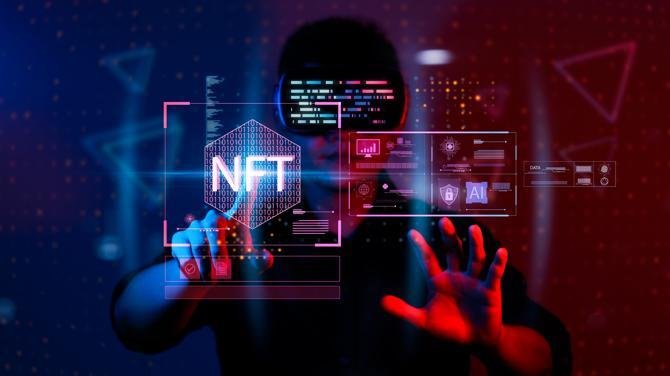Introduction
“The Truth About Rug Pulls: How to Spot and Avoid Crypto Exit Scams” Cryptocurrency and decentralized finance (DeFi) offer a revolutionary alternative to traditional banking. But with the freedom and decentralization comes a dark reality: rug pulls—one of the most devastating and increasingly common types of crypto exit scams.
In a rug pull, developers abandon a project and run away with investors’ money. Often disguised as legitimate ventures with eye-catching whitepapers, slick websites, and active communities, these projects collapse suddenly, leaving holders with worthless tokens and no way to recover funds.
In this article, we’ll dive deep into what rug pulls are, how they work, major red flags to watch for, and most importantly—how to protect yourself from falling victim.
What Is a Rug Pull?
A rug pull is a malicious maneuver in the crypto space where developers promote a token or project, gather investor money, and then abruptly abandon the project—stealing all the liquidity or funds.
The Truth About Rug Pulls: How to Spot and Avoid Crypto Exit Scams
The name “rug pull” comes from the idiom “pulling the rug out from under someone,” and that’s exactly what happens: just as investors start gaining confidence, the developers disappear—along with the money.
Types of Rug Pulls
Not all rug pulls are the same. Understanding the types helps you detect danger signs before it’s too late:
1. Liquidity Rug Pull
This is the most common type. In decentralized exchanges like Uniswap or PancakeSwap, tokens require liquidity pools to function. Developers initially provide liquidity, encouraging trading. But once the price pumps, they withdraw all liquidity, leaving token holders unable to sell.
2. Smart Contract Rug Pull
Some developers write malicious code into the smart contract that powers the token. This code may:
Prevent users from selling
Allow the developers to mint infinite tokens
Drain wallets once someone interacts with the contract
These contracts might look clean on the surface but contain hidden backdoors.
3. Soft Rug Pull
A soft rug pull isn’t illegal, but it’s unethical. The development team stops working on the project, abandons social media channels, and makes no further updates. No dramatic liquidity pull occurs, but the project slowly dies, and the token value sinks.
Real-World Example: The Squid Game Token
In late 2021, a token called Squid Game (SQUID) launched, capitalizing on the viral Netflix show. It saw a meteoric rise in value, gaining over 75,000% in days.
But behind the scenes, developers had locked out the sell function in the smart contract, preventing users from selling their tokens. Eventually, the price crashed from $2,860 to nearly zero in minutes as the creators pulled out all liquidity—walking away with more than $3 million.
The website vanished, social media accounts were deleted, and investors were left helpless.
Red Flags: How to Spot a Rug Pull Early
Scammers rely on investors acting on emotion and FOMO. The best defense is education and due diligence. Here are the top red flags to watch for:
🚩 1. Anonymous or Unverifiable Team
If you can’t find the team’s LinkedIn profiles, past projects, or public presence—be cautious. Legitimate projects are transparent about their leadership.
🚩 2. No Liquidity Lock
Without a liquidity lock, developers can remove liquidity at any time. Tools like Unicrypt or Team Finance can show if a project has locked its funds.
🚩 3. Overpromising Tokenomics
Claims like “1000x returns in a week” or “guaranteed profits” are usually scams. Crypto is volatile—nothing is guaranteed.
🚩 4. Lack of Audits
Smart contract audits by third-party firms like Certik or Hacken validate code safety. No audit? Be wary.
🚩 5. Poor or Plagiarized Whitepaper
Check for professionalism in the whitepaper. Many rug pulls copy whitepapers from other projects or use vague language with no real roadmap.
🚩 6. Hyper-Marketing Without Substance
If a project spends more effort on influencers, meme marketing, and giveaways than actual development—it’s likely a trap.
Tools to Check a Project’s Legitimacy
Fortunately, there are several free tools that help investors research projects before buying:
🔍 TokenSniffer
Analyzes tokens for suspicious contract activity, honeypots (tokens you can buy but not sell), and creator wallet information.
Website: tokensniffer.com
🔍 RugDoc
Focuses on DeFi projects and ranks them based on their risk of being a rug pull.
Website: rugdoc.io
🔍 BSCScan / Etherscan
Explore token ownership distribution, contract code, liquidity status, and transaction history.
🔍 DEXTools
Gives trading data and pair analytics for newly launched tokens.
How to Protect Yourself From Rug Pulls
If you’re investing in new projects, especially in DeFi or meme tokens, follow these guidelines to reduce your risk:
✅ 1. Research the Project Thoroughly
Check out the team, roadmap, utility, and whether the token solves a real problem. Look at the GitHub repository and Discord community for activity.
✅ 2. Check Liquidity Locks
Use tools to verify that liquidity is locked for a reasonable time—typically 6 to 12 months.
✅ 3. Avoid Hype-Only Tokens
If the entire project revolves around memes and marketing, with no real use case or technology, it’s a red flag.
✅ 4. Start Small
If you’re experimenting with a new token, don’t go all in. Invest an amount you’re comfortable losing until trust is built.
✅ 5. Use a Separate Wallet
When testing out high-risk tokens, use a new wallet to avoid exposing your main funds to risky contracts.
✅ 6. Stay Updated on Scams
Join communities, follow reputable auditors, and read crypto scam blogs regularly.
Bonus: Top 3 Tips for DeFi Investors
Verify Before You Connect: Don’t connect your wallet to DApps unless you trust the source 100%.
Revoke Access Often: Use revoke.cash to remove permissions from inactive projects.
Avoid Telegram FOMO: Telegram groups are breeding grounds for pump-and-dump schemes and fake hype.
Conclusion
Rug pulls are a harsh reminder that the crypto world is still the Wild West. The lack of regulation and open access gives scammers fertile ground to exploit.
However, with the right mindset and tools, you can protect yourself. Focus on research, security, and caution over hype. Crypto can be profitable and life-changing—but only if you’re careful.
Before you invest, ask yourself:
Who is behind this project?
What problem does it solve?
Is the liquidity locked?
Has the contract been audited?
If the answers aren’t clear, it’s best to move on.





